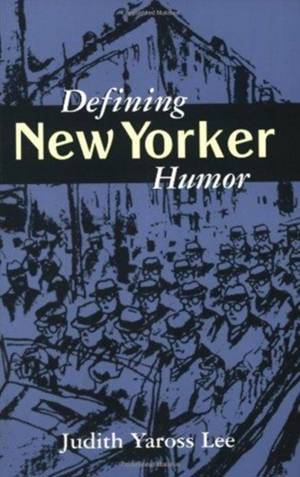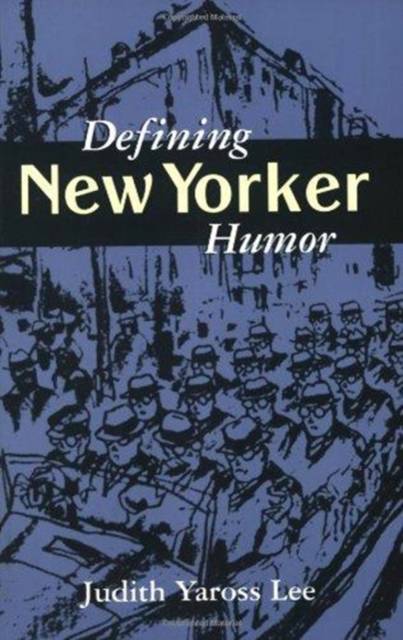
- Afhalen na 1 uur in een winkel met voorraad
- Gratis thuislevering in België vanaf € 30
- Ruim aanbod met 7 miljoen producten
- Afhalen na 1 uur in een winkel met voorraad
- Gratis thuislevering in België vanaf € 30
- Ruim aanbod met 7 miljoen producten
Zoeken
€ 32,45
+ 64 punten
Omschrijving
"The early history of New York is obscured in myth," observed the pseudonymous author of "The Story of Manhattankind" in the first issue of The New Yorker (21 February 1925), "and to separate the purely historical from the purely hysterical is no easy task." The same must be said of the magazine itself. The purely historical remained hidden until The New Yorker's archives were opened to scholars in the mid-nineties, although the hysterical--pure and otherwise--dominates the anecdotes in memoirs of some of the magazine's original staff members. Late in 1924 Harold Ross assembled a small staff to create a new kind of weekly humor magazine, a "reflection in word and picture of metropolitan life . . . with gaiety, wit, and satire." His target audience was affluent, local, educated sophisticates. This is the image he sold to Manhattan advertisers. By 1930 the magazine could withstand the Depression even as its predecessors collapsed. In 1952 W. H. Auden declared The New Yorker "the best comic magazine in existence." In 1994 no one disputed Tina Brown's claim that its cartoons constitute "a sort of national treasure." Drawing on archival records and works by major contributors, Judith Yaross Lee traces how artists, writers, and editors realized Ross's vision. This first scholarly history of The New Yorker chronicles the magazine's efforts to define an editorial formula that appealed to readers more interested in Picasso's Paris than in Will Rogers's Oklahoma. Lee recovers hundreds of still-funny cartoons, stories, and verses that were eclipsed because The New Yorker was not indexed and because its editors, until 1969, refused to include a table of contents. Also, she dispels cherished myths of the early years. Far from relying on a few insider wits, the editors scoured unsolicited submissions for new artists and writers, honing every item and inviting new ones. Misogynous in neither policy nor in practice, the magazine cultivated women both as readers and contributors. While the beleaguered Little Man staggered through tales of the war between the sexes, equally discouraged women set their version of the battles into rhyme. Lee shows how The New Yorker's eminence in cartoons blossomed as the captions were reduced to one line and as the subjects tweaked class and race prejudice, ridiculed feminism and modernism, lampooned urban customs and types, and created new relations between visual and verbal wit.
Specificaties
Betrokkenen
- Auteur(s):
- Uitgeverij:
Inhoud
- Aantal bladzijden:
- 427
- Taal:
- Engels
- Reeks:
Eigenschappen
- Productcode (EAN):
- 9781578061983
- Verschijningsdatum:
- 28/02/2000
- Uitvoering:
- Paperback
- Formaat:
- Trade paperback (VS)
- Afmetingen:
- 150 mm x 228 mm
- Gewicht:
- 671 g

Alleen bij Standaard Boekhandel
+ 64 punten op je klantenkaart van Standaard Boekhandel
Beoordelingen
We publiceren alleen reviews die voldoen aan de voorwaarden voor reviews. Bekijk onze voorwaarden voor reviews.











